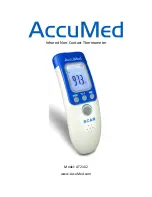
7
Troubleshooting
7.1
Troubleshooting
In the event that the probe appears to function abnormally, this section may be
of use in solving the problem. Several possible problem conditions are de-
scribed along with likely causes and solutions. If a problem arises, please read
this section carefully and attempt to understand and solve the problem. If the
probe seems faulty or the problem cannot otherwise be solved, contact an Au-
thorized Hart Scientific Service Center (see Section 1.3) for assistance. Be sure
to have the model number and serial number of your probe available.
Problem
Causes and Solutions
Data changes greater than 0.1°C
are observed
•
Mechanical shock can cause temperature errors as great as 0.5°C. If this
is observed, first measure and record the R
tp.
Data changes less than 0.1°C
•
Slight mechanical shock can cause temperature errors less than 0.1°C.
Data unstable
•
If the data is unstable at the Triple Point of Water (TPW), check the con-
nector. If the connector is correct, contact an Authorized Hart Scientific
Service Center (see Section 1.3). The PRT may be damaged.
•
If the data is unstable at high temperatures, it may be due to electrical
noise in the system. Reduce the temperature and observe the data. If it
is stable, electrical noise is interfering with the measurements at high
temperatures. Check the grounding of the readout device and the heat
source. A faulty ground on either device could interfere with high tem-
perature measurements. A ground wire attached to the metal sheath of
the PRT may help to reduce electrical noise interference.
Temperature readout different than
expected, e.g. the heat source is set
at 150°C, the PRT measures 125°C.
•
Measure the PRT resistance at TPW.
•
If the resistance of the PRT is less than the rated resistance, e.g. 70
Ω
,
there may be a short in the sensor. Contact an Authorized Hart Scientific
Service Center (see Section 1.3).
•
If the resistance of the PRT is only a few ohms, there may be a short in
the four lead-wires. Contact an Authorized Hart Scientific Service Center
(see Section 1.3).
•
If the PRT is open, the resistance will be “Out of Limits” or in the
kilo-ohm or mega-ohm range. Contact an Authorized Hart Scientific Ser-
vice Center (see Section 1.3).
5623A
15
7 Troubleshooting

































